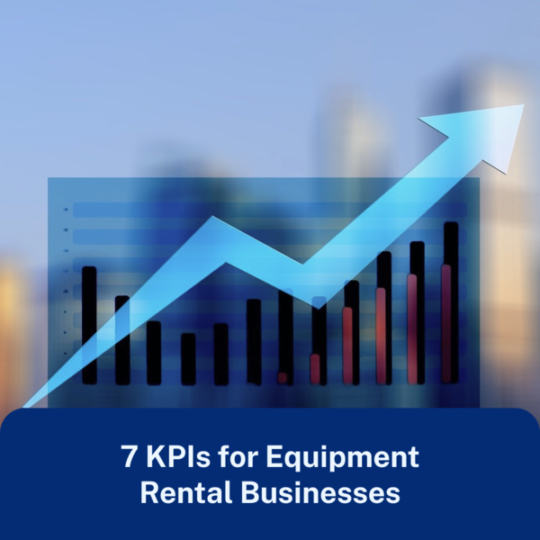In the world of business, key performance indicators (KPIs) serve as a compass, guiding organizations toward their goals and objectives. For equipment rental businesses, success is often measured by a variety of metrics that can help in making informed decisions, improving efficiency, and maximizing equipment profitability. In this article, we’ll explore seven essential KPIs for equipment rental businesses, which are instrumental in maintaining a competitive edge and ensuring the smooth operation of your enterprise.
- Equipment Utilization Rate: The Equipment Utilization Rate (EUR) is a fundamental KPI for rental businesses. It measures the percentage of time your equipment is in use versus the time it’s sitting idle. A high EUR signifies effective asset management and increased revenue. To calculate this rate, divide the total hours the equipment was rented by the total available hours in a specific time frame. Monitoring and improving your EUR can help identify which pieces of equipment are most in-demand and which ones might need maintenance or replacement.
- Rental Revenue and Profit Margins: Rental revenue is the lifeblood of an equipment rental business. Monitoring your rental revenue and profit margins provides insights into your overall financial health. Keep a close eye on the revenue generated from each piece of equipment and analyze the profit margins on individual rentals. This data will help you price your rentals effectively, optimize your inventory, and ensure profitability.
- Maintenance Costs: Properly maintaining your equipment is crucial to the longevity and reliability of your assets. Monitoring maintenance costs as a KPI will help you identify which equipment requires the most attention and which might be nearing the end of their useful life. Minimizing maintenance costs while ensuring equipment safety and performance is a delicate balance that this KPI can help you strike.
- Rental Equipment: Turnover Rental equipment turnover measures how quickly your equipment is rented and returned. A higher turnover rate indicates efficient equipment utilization of your assets, which can lead to increased revenue. A lower turnover rate may suggest a need to adjust pricing, marketing, or availability. Keep track of how long it takes to rent out equipment and try to decrease this time to maximize your earnings.
- Customer Satisfaction and Retention: Happy customers are more likely to become repeat customers and refer your business to others. Measuring customer satisfaction is vital for the long-term success of your equipment rental business. Utilize customer feedback surveys and reviews to gauge customer satisfaction and track retention rates. A high level of satisfaction and retention indicates a well-managed business that consistently meets customer expectations.
- Inventory Accuracy: Equipment rental businesses heavily depend on accurate inventory management. Maintaining an accurate count of available equipment is essential for ensuring you can meet customer demands promptly. High inventory accuracy can also reduce operational costs by preventing overstocking or understocking issues. Implement inventory management systems and conduct regular audits to measure and improve your inventory accuracy KPI.
- Return on Investment (ROI): Return on Investment (ROI) is a comprehensive KPI that evaluates the overall profitability of your equipment rental business. It considers factors like acquisition costs, maintenance expenses, rental income, and other financial aspects. A positive ROI indicates that your business is thriving and generating returns on the investments made in equipment and operations. Regularly assess your ROI to ensure you’re on the right path towards financial sustainability and growth.
KPIs are essential tools for measuring and managing the success of equipment rental businesses success. By consistently monitoring and analyzing these key metrics, you can make informed decisions, optimize operations, enhance customer satisfaction, and ultimately drive profitability. Whether you are a small, local rental business or a larger enterprise, these KPIs will help you navigate the competitive world of equipment rentals and ensure your long-term success.

